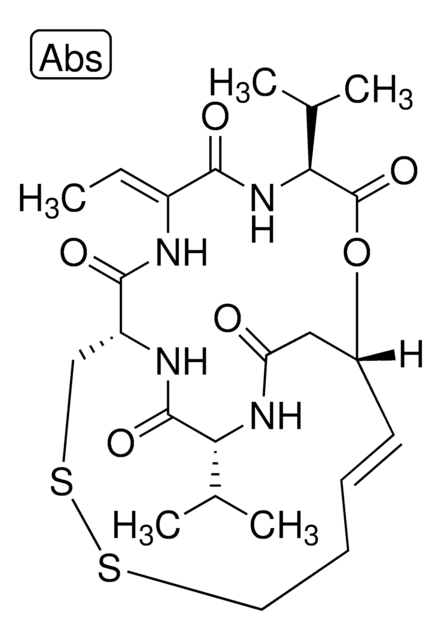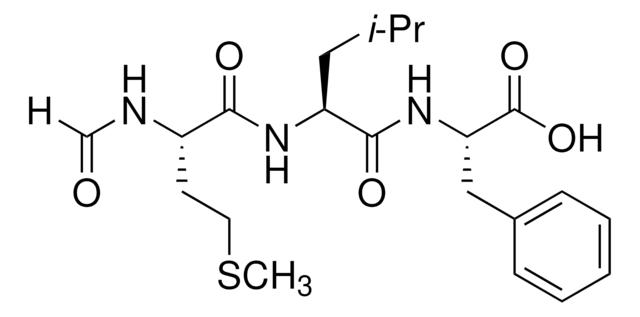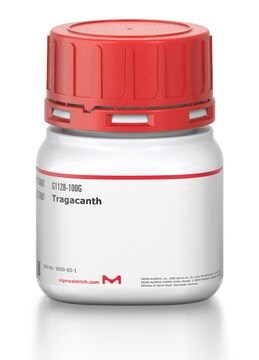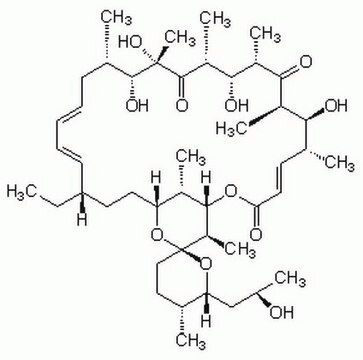SML1575
Cyclosporin H
≥97% (HPLC)
Synonim(y):
1,4,7,10,13,16,19,22,25,28,31-Undecaazacyclotritriacontane, cyclic peptide deriv, 5-(N-Methyl-D-valine)-Cyclosporin A
About This Item
Polecane produkty
pochodzenie biologiczne
Tolypocladium inflatum
Poziom jakości
Próba
≥97% (HPLC)
Formularz
powder
aktywność optyczna
[α]/D -100 to -115°, c = 0.5 in methanol
warunki przechowywania
desiccated
protect from light
kolor
white to beige
temp. przechowywania
−20°C
InChI
1S/C63H113N11O12/c1-26-28-29-41(15)53(76)52-56(79)66-44(27-2)58(81)67(18)34-49(75)68(19)46(31-36(5)6)60(83)72(23)50(39(11)12)62(85)69(20)45(30-35(3)4)55(78)64-42(16)54(77)65-43(17)57(80)70(21)47(32-37(7)8)59(82)71(22)48(33-38(9)10)61(84)73(24)51(40(13)14)63(86)74(52)25/h26,28,35-48,50-53,76H,27,29-34H2,1-25H3,(H,64,78)(H,65,77)(H,66,79)/b28-26+/t41-,42+,43-,44+,45+,46+,47+,48+,50-,51+,52?,53-/m1/s1
Klucz InChI
BQQHPBPTWWXRMU-SXHXJWHLSA-N
Zastosowanie
- to pre-culture the lineage depleted murine Flt3ITDIDH2R140Q BM cells for transduction
- as a formyl peptide receptor (FPR) antagonist to study the role of FPR1 in calcium mobilization in polymorphonuclear leukocytes (PMNs)
- as one of the small molecules to study its effect on the homology-directed repair (HDR) editing efficiency in human-induced pluripotent stem cells (iPSCs) and T cells
Działania biochem./fizjol.
Hasło ostrzegawcze
Danger
Zwroty wskazujące rodzaj zagrożenia
Zwroty wskazujące środki ostrożności
Klasyfikacja zagrożeń
Acute Tox. 4 Oral - Carc. 1B - Repr. 1B
Kod klasy składowania
6.1C - Combustible, acute toxic Cat.3 / toxic compounds or compounds which causing chronic effects
Klasa zagrożenia wodnego (WGK)
WGK 3
Temperatura zapłonu (°F)
Not applicable
Temperatura zapłonu (°C)
Not applicable
Wybierz jedną z najnowszych wersji:
Certyfikaty analizy (CoA)
Nie widzisz odpowiedniej wersji?
Jeśli potrzebujesz konkretnej wersji, możesz wyszukać konkretny certyfikat według numeru partii lub serii.
Masz już ten produkt?
Dokumenty związane z niedawno zakupionymi produktami zostały zamieszczone w Bibliotece dokumentów.
Klienci oglądali również te produkty
Nasz zespół naukowców ma doświadczenie we wszystkich obszarach badań, w tym w naukach przyrodniczych, materiałoznawstwie, syntezie chemicznej, chromatografii, analityce i wielu innych dziedzinach.
Skontaktuj się z zespołem ds. pomocy technicznej








